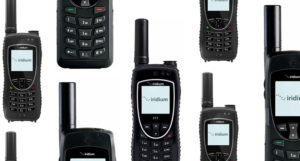Currently the air-traffic monitoring system is safe but very inefficient due to limitations with existing transmission capabilities. Aircraft must travel with about 100 nautical miles of air space around each of them. Satellite communications would help reduce this to as little as five miles, allowing more planes to fly within the jet stream, or change altitude to avoid fuel-sapping turbulence.
The Iridium NEXT satellites, will carry devices that broadcast aircraft speed and locations to air-traffic controllers on the ground, allowing planes to save fuel by flying closer together and on more precise routes.
The system is designed as an improvement to the current methods air-traffic controllers use to monitor and guide airplanes: radar and, to a lesser extent, a system that transmits automatic signals from an aircraft to controllers by way of a land-based receiver.
The organization will be run by Aireon LLC, (whose minority owners are the Irish Aviation Authority) a joint venture between Iridium and Nav Canada, the domestic air-traffic controller that will be a 51-per-cent owner with an investment of $150-million.
Aileron already has agreements with air-traffic controllers in the United States, Britain, South Africa, Singapore and New Zealand, and expects to be up and running within three years. Many airlines have already equipped their planes with the equipment that can communicate with the satellites and will not face additional costs.
Read more in this article on theglobeandmail.com by Eric Atkins

